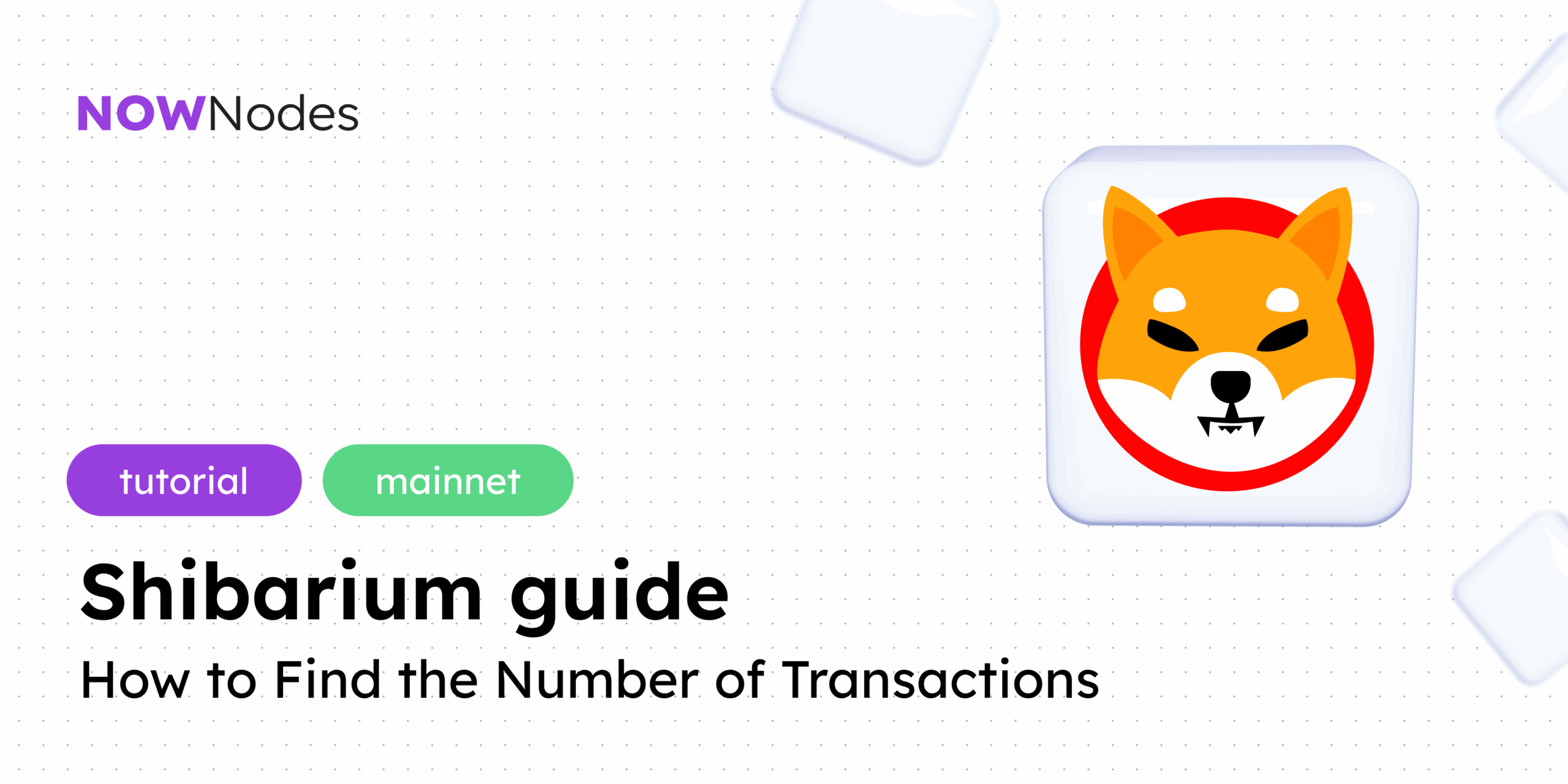The Shibarium blockchain is gaining traction among users and developers thanks to its low fees, quick transaction speeds, and seamless integration with the Shiba Inu ecosystem. In contrast to the main Ethereum network, which often has high fees, Shibarium provides a more cost-effective and speedy alternative. This is particularly beneficial for dApp developers looking to create DeFi platforms and NFT marketplaces without breaking the bank.
One of the useful tools in the JSON-RPC arsenal is the method eth_getBlockTransactionCountByHash. Let’s dive in!
What is Shibarium Blockchain?
The Shibarium ecosystem is a Layer 2 solution designed to improve scalability and lower transaction fees. It functions atop the Ethereum mainnet, enabling quicker and more affordable transactions. Essentially, Shibarium aims to foster an ecosystem for decentralized applications (dApps), DeFi, and NFTs, utilizing SHIB, BONE, and LEASH tokens as its core assets.
How Does Shibarium Blockchain Work?
The Shibarium ecosystem operates as a layer 2 solution on top of Ethereum, enabling it to bundle transactions for quicker and more cost-effective processing. It employs Plasma technology and various scalability methods to enhance transaction speed and lessen the burden on the Ethereum mainnet. Furthermore, it sends transactions to the Ethereum mainnet for final approval and security.
The eth_getBlockTransactionCountByHash Method
The eth_getBlockTransactionCountByHash function helps you find out how many transactions are in a block by using its hash. This method is great for examining block activity and keeping track of the transactions that have been processed in a block on the Shibarium ecosystem. For instance, let’s take a look at an example from NOWNodes:
Method: POST
https://shib.nownodes.io
Example Request Body:
{
"jsonrpc": "2.0",
"method": "eth_getBlockTransactionCountByHash",
"params": [
"0xdb0513fae8e0265abfa2bd8e5adbb7d81c0bdd7d9b3c068550a884642da02f39"
],
"id": 1
}
Parameter Description:
blockHash(string) – The hash of the block to query on the Shibarium blockchain.
Example Response:
If the block is found and contains transactions:
{
"jsonrpc": "2.0",
"id": 1,
"result": "0x4"
}
"result": "0x4"means there are 4 transactions in the block (in hexadecimal).
If the block is not found or contains no transactions:
{
"jsonrpc": "2.0",
"id": 1,
"result": null
}
Why Use This Method on Shibarium Blockchain?
- To track block activity for analytics on Shibarium ecosystem.
- To count transactions for monitoring network load on the Shibarium mainnet
- To automate blockchain data analysis and statistics building for the Shibarium blockchain.
Application in Shibarium Blockchain
Within the Shibarium ecosystem, the eth_getBlockTransactionCountByHash function helps determine the transaction activity of individual blocks in the layer 2 network. This information is valuable for understanding transaction patterns and assessing the overall network load. Furthermore, it can be integrated into analytics dashboards and monitoring tools designed for the Shibarium blockchain.
Conclusion
In conclusion, the Shibarium ecosystem represents a significant advancement for the Shiba Inu ecosystem, transforming it from a mere meme token into a comprehensive blockchain platform equipped with DeFi and dApp functionalities. By utilizing JSON-RPC methods such as eth_getBlockTransactionCountByHash, developers and users can efficiently analyze Shibarium blockchain data and track transactions, promoting transparency and easy access to information.
If you want to quickly and seamlessly connect to Shibarium node, NOWNodes is a reliable solution. It provides fast and easy access to Shibarium and other leading blockchains through APIs and WebSocket connections.



